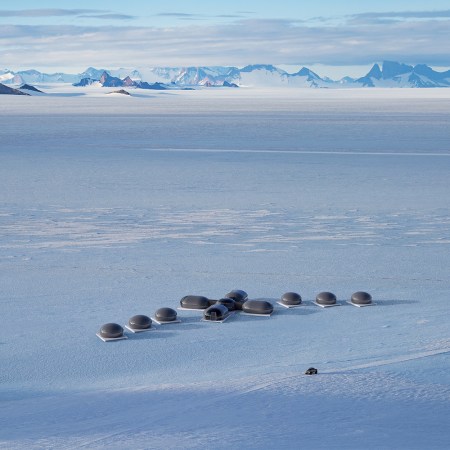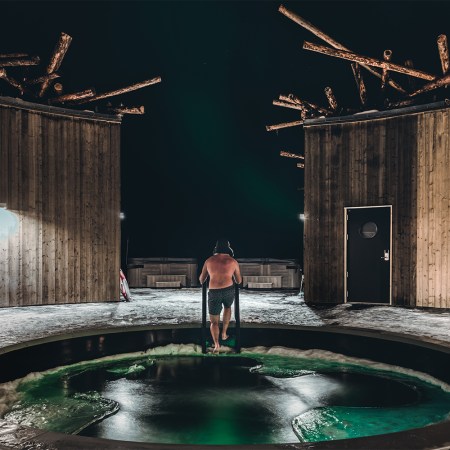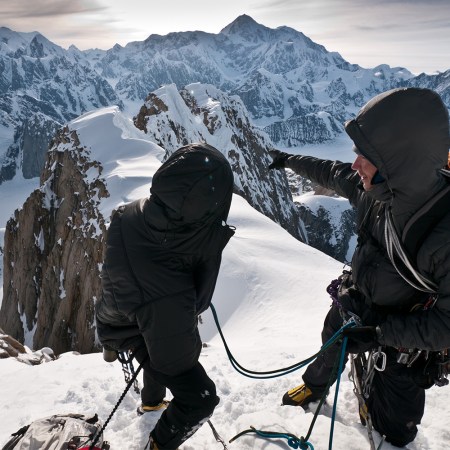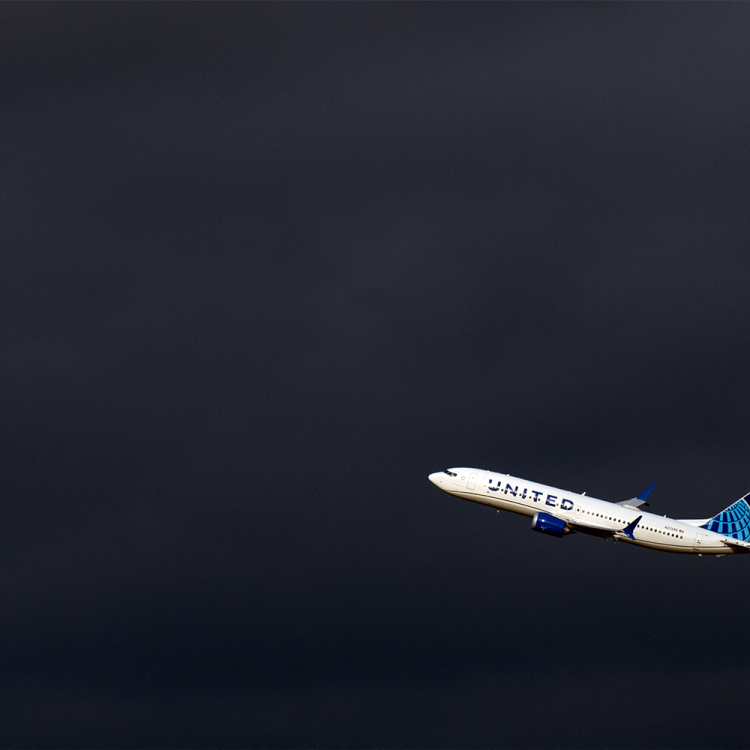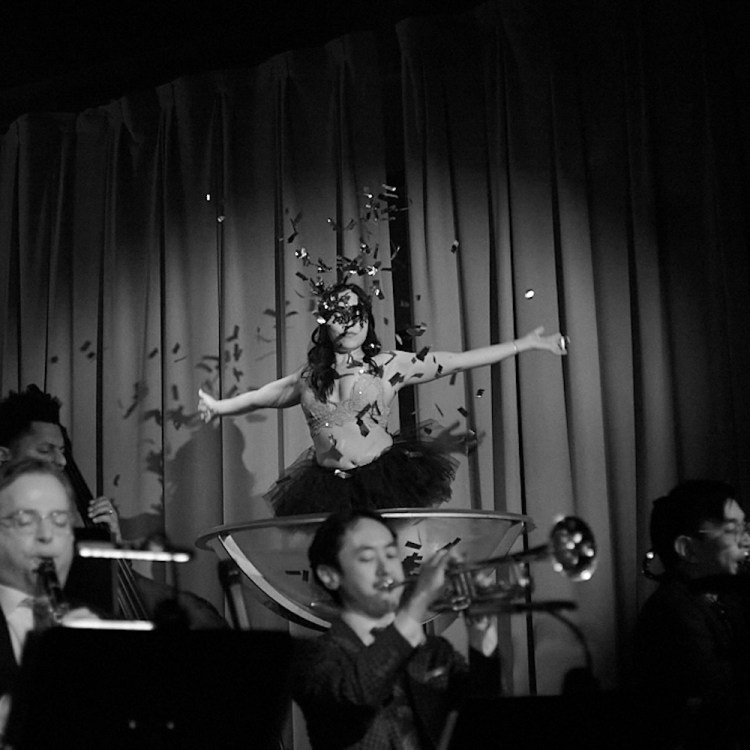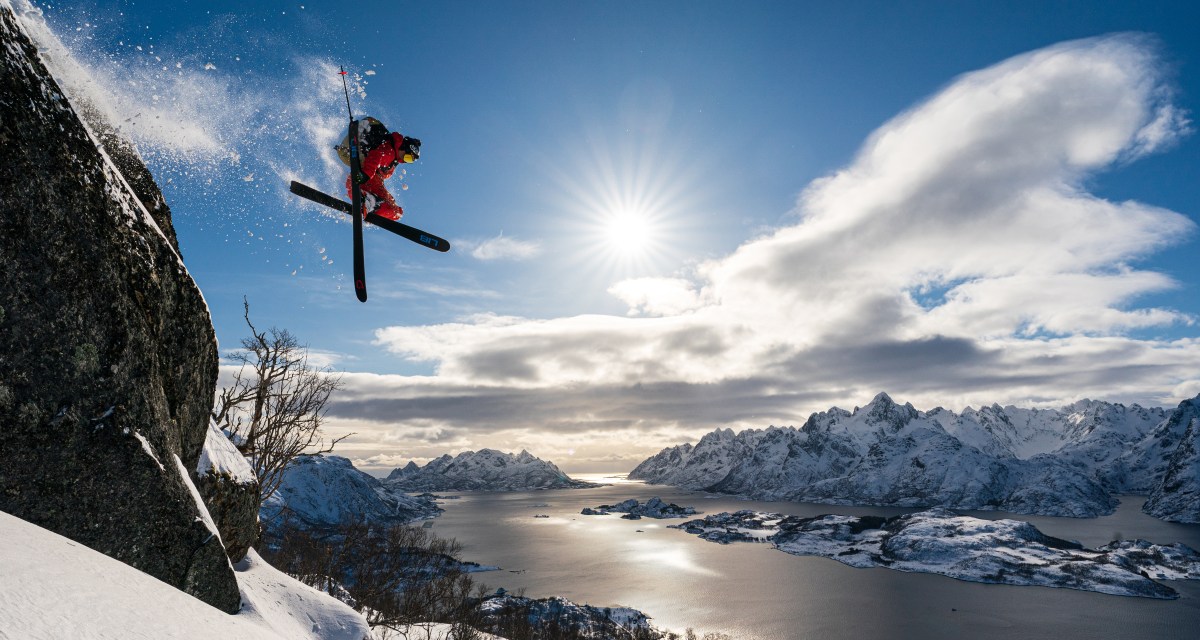
By Devon O’Neil / Photographs by Liam Doran
A friend had suggested we detour to Digermulen. We were driving from Narvik, on the east coast of northern Norway, to Kabelvåg, a small village and backcountry-skiing mecca in the Lofoten Islands. Almost all of the 2 ½-hour route looks like a postcard, but an hour from Kabelvåg, we took our friend’s advice and hung a left. Winding along the ocean, snapping photos of giant peaks, we noticed a pair of vehicles parked at a narrow pullout. We had been searching for a place to ski this afternoon, so we made a mental note then continued on to Digermulen, a Norse utopia of summer cottages and happy couples out walking the streets. The scene looked like Cape Cod in the seventies.
While retracing our detour, we saw a skintrack heading into the forest near the pullout. There happened to be one more parking spot. Five minutes later, my three friends and I were clicking into our bindings on the side of the road, 50 feet from a sheet of sea ice. Four snowboarders had just finished up. One of our posse asked how the snow was. “It’s almost too much powder,” a young woman said with a Norwegian accent. “Up to my armpits in places.”
Our eyebrows perked up. I exchanged a glance with Sven Brunso, a 51-year-old powder hound from Durango, Colorado, who had organized our trip. Really, her armpits? It only took 100 feet of climbing to realize she might not be kidding. What had been soggy snow at sea level was suddenly dry, light powder, glistening in the early April sun as we skinned through a low-hanging forest that would be a monkey’s dream. It got deeper as we went higher. My senses were screaming. I still had no idea how rare our day was about to get.
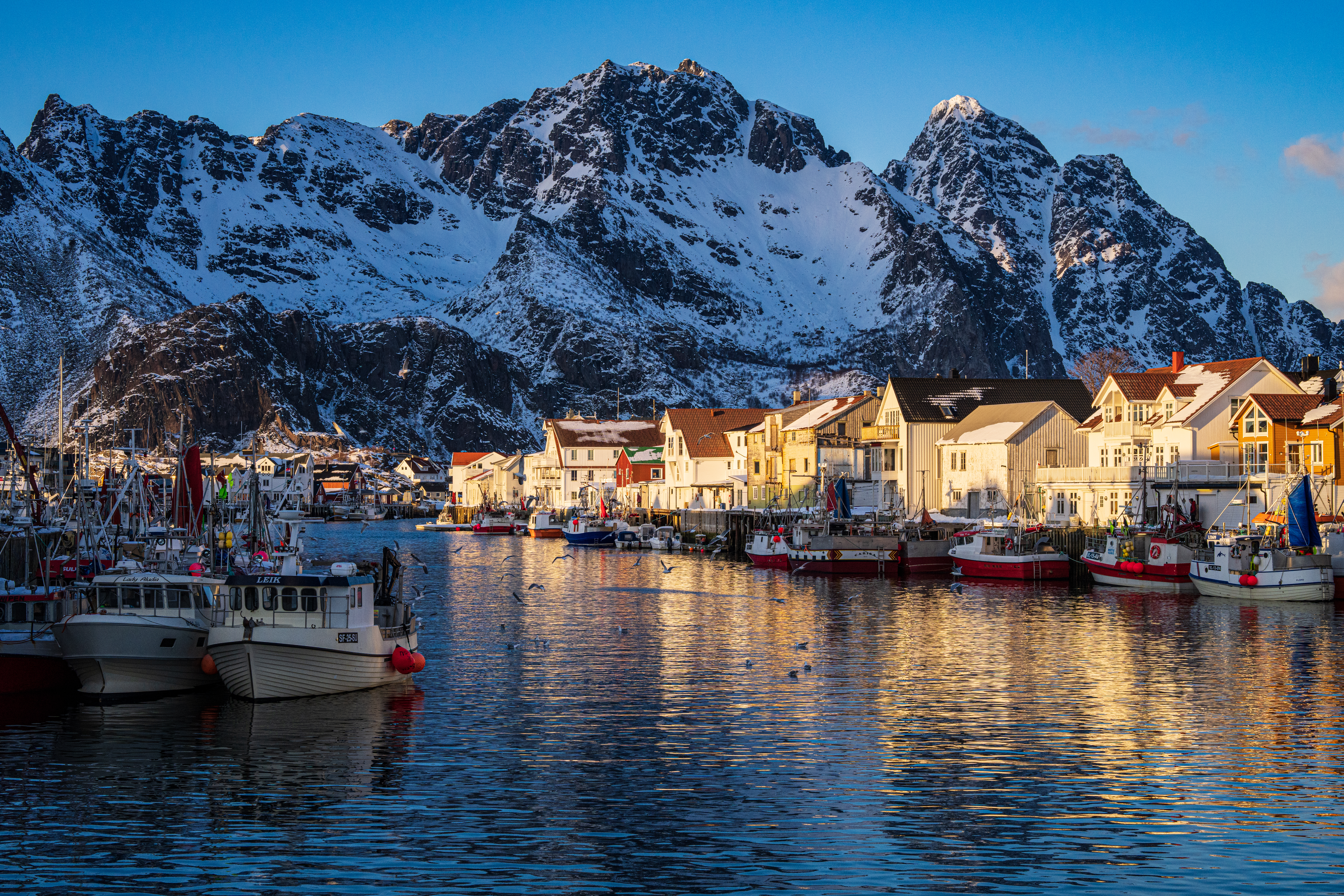
I was the only one of our quartet who hadn’t been to the Lofoten Islands. The other three visited in 2019, before traveling across the Atlantic to ski became virtually verboten. To clarify, this trip wasn’t just for pleasure; we were working too. Liam Doran, a photographer from the same hometown as me — Breckenridge, Colorado — had some commercial assignments lined up, and I was reporting a story on adventure travel and climate change, which is particularly stark in Lofoten. But the four of us, including Adam Ü, a pro skier and marine biologist from Glacier, Washington, also organize our winter days around skiing soft snow in pretty places. This qualified.
After 15 minutes of climbing, we came across a group of high school and college kids taking a break in a clearing. Their deep ski tracks explained their wide grins. Amazingly, one of them told us that a week ago this entire forest was dry ground — an image that left me shaking my head as we plodded higher. Eventually we found a suitable zone to shoot photos, and we spent the next couple of hours trenching through luscious powder and schussing off rocks as Liam’s shutter clicked.
It was nearing 6 p.m. when we finally decided to leave the tranquil forest for the windier ridge above. We’d delayed going higher because we figured the snow wouldn’t be as good. It didn’t take long to realize our assumption had been wrong. Sven found a shallow concavity on top of the ridge, and Liam set up for a shot. The gusts howled. I ducked behind a rock. The sinking sun was beginning to turn the powder golden. After a few turns, Sven hollered up with a report. “Pretty good!”
“It’s almost too much powder,” a young woman said with a Norwegian accent. “Up to my armpits in places.”
The reason we’d waited until sunset to gain the ridge — and the reason we came to Digermulen at all — was because of the backdrop. Across the sea, towering above a bay called Trollfjord, was a collection of peaks that looked as sharp and foreboding as the Himalayas. For the next half hour we leap frogged down the mountain in the kind of powder that Norway almost never gets, illuminated by a glowing orb, enveloped in all directions by Scandinavian magic. It was, as skiers say in Lofoten, fjordeous.
By the time we got back to the pullout, our friend in Kabelvåg, Seth Hobby, was starting to get worried. “Where are you guys?” he texted. We still had an hour’s drive to the lodge before dinner closed at 9 p.m. We used every kilometer-per-hour the twisty road allowed and pulled in at 9:01, buzzing from a day unlike anything we had expected or experienced.
****
The irony was that we almost didn’t come to Norway. Usually, Lofoten gets so much snow in March that locals call the increase in snowpack depth “the March meter.” This year, it rained so heavily that the pack lost a meter. Then it froze, creating a treacherous ice layer.
Conditions were terrible as our trip neared, to the point where we wondered if it would be better to use our tickets a different time. But we had reason for optimism when a weeklong storm cycle appeared in the forecast. That was countered by an email we received from Sven, who’s had two back surgeries, a few days before our departure from the states. “It is with much sadness that I write to say I am 99% sure I have to bail on Norway. Without going into much detail, I will tell you that my back is in all-time bad shape, and my surgeon is not comfortable with me being in remote mountains — if something gets worse, it could have lifeline ramifications. It is now going out 3-4 times a day, and I can’t sit for more than 2-3 minutes without it going into a spasm.” He went on: “This is the first time I have had to bail on a trip in 20+ years and it is the hardest decision I’ve ever had to make.”
As soon as Sven wrote his email, he started hedging. An MRI the day before his flight showed he no longer had a disc between two vertebrae, causing what is known as “auto fusion” due to so much bone-on-bone contact. This explained his piercing pain. Alas, his FOMO proved stronger than his pain. He could at least fly across the pond and test it out, he figured. So with his doctor’s blessing, he signed back on.
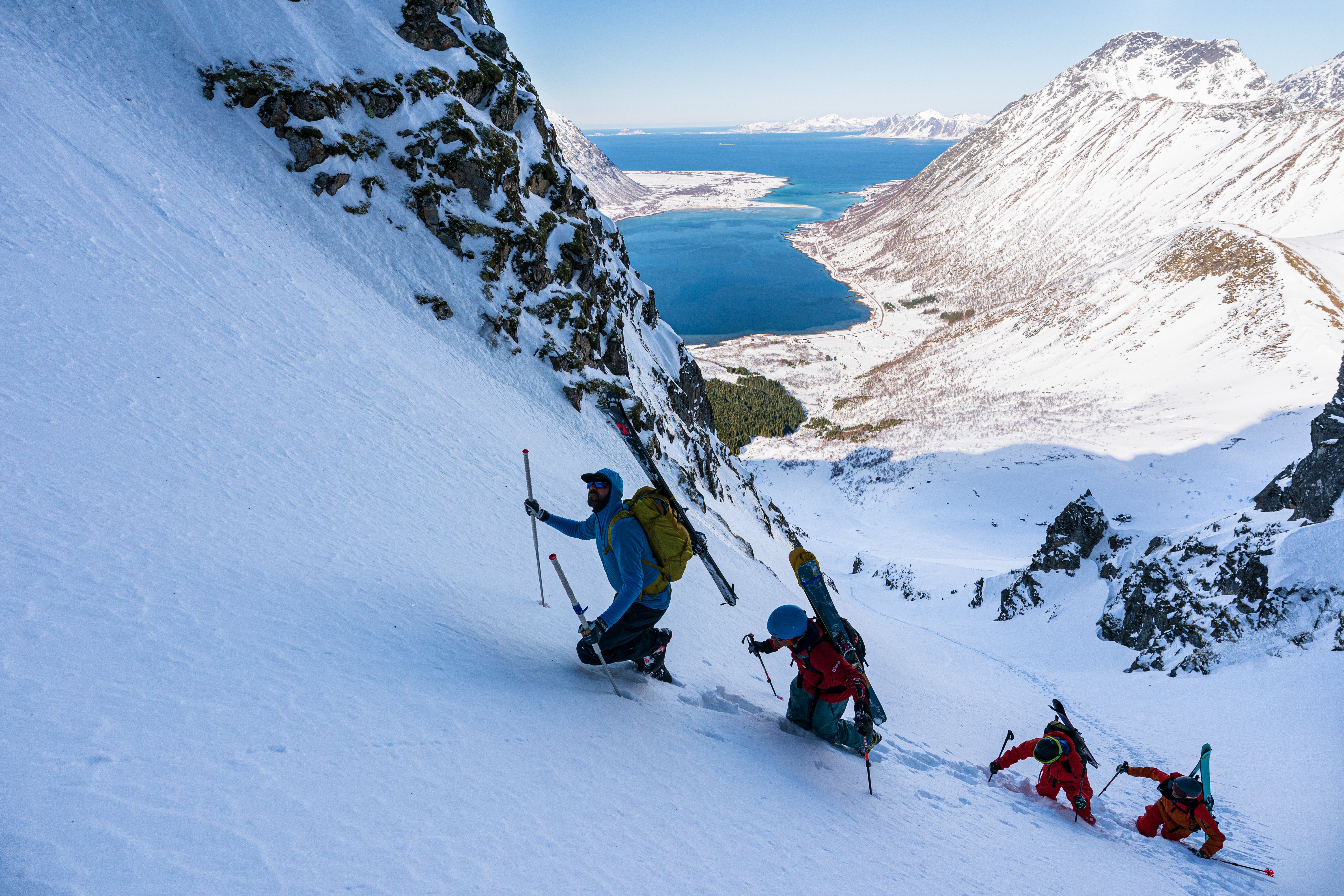
This trip was to be my first international adventure since the pandemic, something I used to do often. Truth be told, it had been hard for me to commit. The day we skied Digermulen was my son’s 7th birthday. I don’t want him or his younger brother to grow up thinking Daddy’s trips are more important than they are — especially their milestones. However, I also believe in the power of experiencing a rare adventure in a special place. It gives me a broader perspective to share with my kids.
Adam, meanwhile, arrived in Norway reeling from relationship heartbreak. A 43-year-old whale biologist who moonlights as a ski-magazine cover model, Adam spends a lot of time studying photos of orca fins. He’d recently broken up with his longtime girlfriend, then rebounded and unexpectedly fallen for the new girl, only to have that end as abruptly as it started, leaving him shattered. Next stop: Narvik.
“I tell you,” he said soon after arriving, scrolling through his phone, “the Narvik Tinder game is not very good. Low quality and low quantity.”
However, as the Nazis found out, Narvik can exceed expectations. The gritty industrial city was the site of Hitler’s first defeat during World War II. You can still see the barnacled remains of crippled battleships in the harbor. It’s an unlikely but worthy ski town, too. During our visit, the local ski area hosted the Norwegian Alpine Championships (we spotted coaches of the famed Attacking Vikings clanking mugs of beer in our hotel bar). But we were there to earn our turns, not ride lifts, and the night before our final ski day, a storm blew in. We woke up to six fresh inches and met a local shredder named Micke Af Ekenstam in the lobby. Built like a jockey, Micke wrote the guidebook to skiing around Narvik — where massive granite monoliths look like what you’d expect if Alaska’s Chugach Mountains had a baby with Yosemite. He skis as much as anyone, despite a demanding job in solar energy and a teenage daughter.
Sven wanted to ski the famous Stetind Couloir, which had thwarted him earlier, but Micke decided to take us up the coast, past his family’s summer cabin, to a spot that would be less exposed. We followed him along the whitecapped Norwegian Sea and up a giant fjord, until he pulled off next to a creek. There was barely enough room for two cars. He flashed a grin. “This spot is not in the guidebook,” he said.
We spent three hours floating through perfectly spaced trees as squalls blew in and out, the only skiers for miles. For someone who lives in one of the world’s busiest ski towns — me — it was a perfect reminder of how leaving our bubble can restore us. By the time we got back to the cars, I felt like I’d been gone a week.
It didn’t take long to find our rhythm once we got to Lofoten. The day after Digermulen, Seth Hobby joined our foursome. Seth and Adam went to college together in Washington state, and Seth helped pioneer many of the archipelago’s now-classic ski lines. He and his wife, Maren Eek Bistrup, who grew up in Oslo, founded the Lofoten Ski Lodge in 2012. The year before, Seth had opened Northern Alpine Guides (NAG), now the largest outfitter in Lofoten and one of the most respected guide services in Norway. Seth, who is certified by the International Federation of Mountain Guides Associations (IFMGA), first skied the area in April 2009, when the only people on the peaks were locals. Lofoten had almost no winter tourism at the time, save for sporadic groups that came for the Northern Lights. Alpine touring (read: modern backcountry skiing) took off later in Lofoten than in the Alps, and Americans didn’t start coming until around 2014.
Local skiers had long-established traditions when it came to ascents and descents. Seth challenged the status quo. “They were like, ‘On this mountain we go this way and then we ski down this way; that’s what we do,’” he recalled. “But I was like, ‘Well, why don’t you go up this way and ski down that way?’ They were like, ‘I don’t know, that’s just what we do!’ But when you have so many mountains and so few skiers, you never really had to think outside the box. You had your safe bets. We sparked something in the local community: a fresh perspective, but also a bit of a kick. There’s so much to check out.”
Seth’s first hire was another college friend and IFMGA guide named Mark Allen, who has come back to guide each year since. “Here, you have the Chamonix experience where you’re looking down at town,” Allen told me one night after dinner. “But on the same island, you can tour for a few hours in the opposite direction and you feel like you’re in the middle of the Arctic. I can’t think of another place like this. The intensity coupled with the fact that it’s an archipelago and massively fjorded, with so many positions to see seawater. It’s almost disorienting to think what direction you’re going, because you have alpine lakes that look like fjords and fjords that look like alpine lakes with sea ice on them.”
It’s hard to communicate how stunning the views are in Lofoten. Visibility is not guaranteed, but when it’s clear it’s almost always mind-blowing.
Our first morning with Seth, we parked at the head of a turquoise bay called Morfjord to ski the Stauren Couloir. The bones of an old whaling hull jutted from the water at low tide. Stauren is a shaded northwest tube, with ice hanging from one of its walls. We ascended a large, sunny bowl to the summit ridge, where conditions turned spicy. “Make sure you have a firm grip before you commit to your steps,” Seth said. “There’s some bullet ice here.”
It’s hard to communicate how stunning the views are in Lofoten. Visibility is not guaranteed, but when it’s clear, it’s almost always mind-blowing. We took off our crampons at the top, inhaled sandwiches, snapped photos like gapers, then began our descent. An upper snowfield led to the couloir, where we all agreed Sven could have first dibs. We chuckled as he made what we deemed unnecessarily wide turns through the perfect cold cream, but deep down we were happy to see him get such an awesome run after doubting he’d be here at all.
That night, Seth asked if we wanted to take a boat to Trollfjord and ski the pointy peaks we’d seen from Digermulen. Of course we did. So the next morning, joined by a guided group that included four-time Tour de France cyclist Brent Bookwalter, we donned special marshmallow suits in case we ended up in the ocean, then held on to metal bars mounted to the Zodiac as we raced toward Trollfjord, breaking up the sea ice with crunching sounds.
The captain, Rafael Huijnink, a 53-year-old Dutch mariner who lives on his sailboat, explained how Trollfjord was discovered in 1890. A local fisherman found the motherlode of cod stock in the fjord’s waters, and rowed back to Svolvaer to spread the news. However, visiting steamships heard about it too, and when a horn blew the next morning signaling it was time to start rowing, the steamships raced ahead and blocked the entrance to the fjord. For three days the furious locals fought the outsiders with axes, knives, and oars, finally breaking through the blockade. The battle led to a new, national law that made it illegal to close any part of the ocean for one’s own gain. Luckily, the same principle holds true for Norway’s mountains: you can ski anywhere you want.
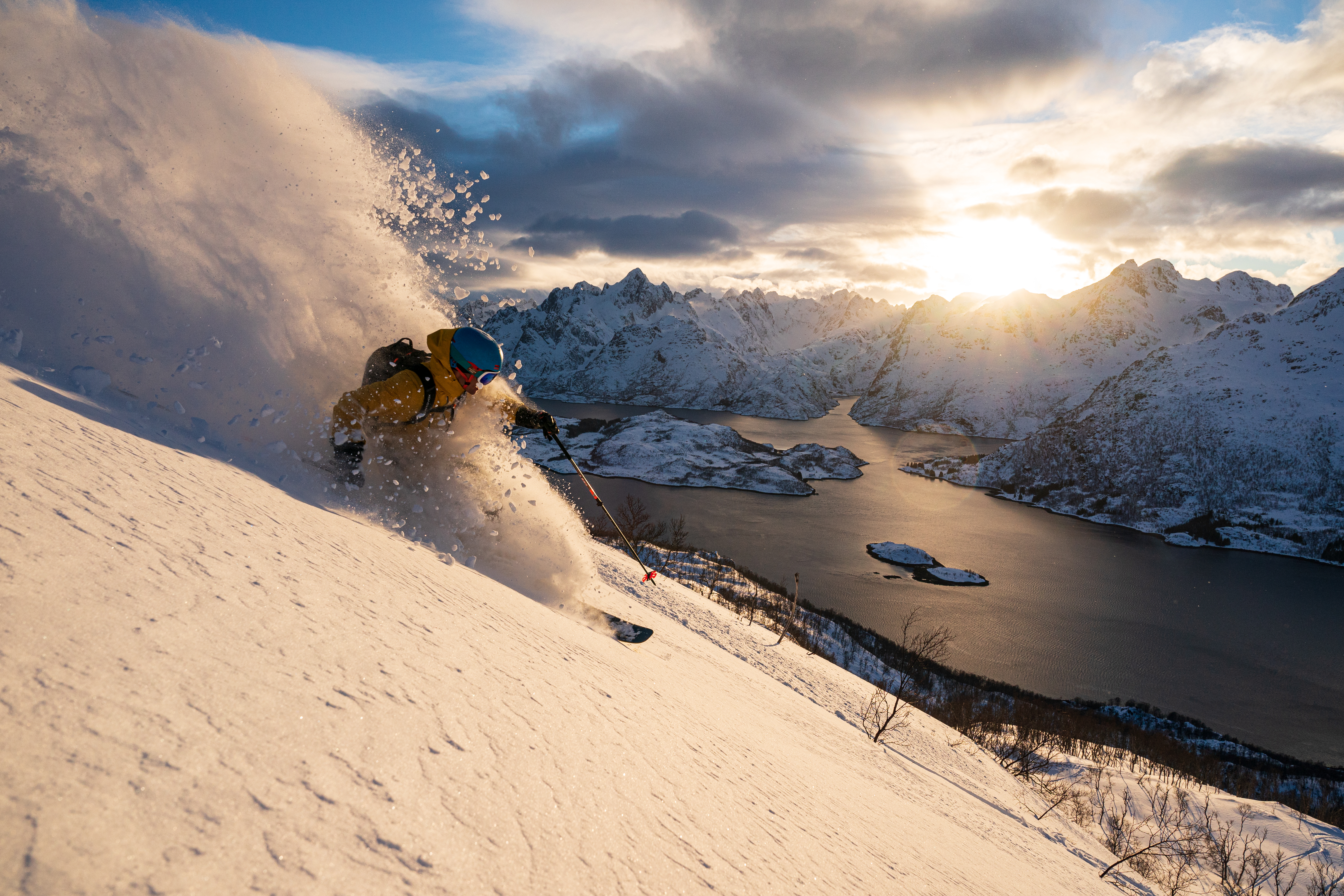
We glided across frozen Troll Lake, which supplies hydropower to locals, then climbed up to a col in an upper basin. There, the light turned flat and we cut our losses, skiing silky snow back to the dock. One of the laws you learn quickly in Norway is the country’s zero tolerance for drinking and driving (in addition to doling out huge fines for speeding). You can’t even have a hint of alcohol on your breath. So if we wanted to enjoy a trailhead beer after skiing, one of us always abstained. It was my turn to stay dry at Trollfjord, so I watched the others celebrate another rare ski day with crisp canned pilsners as fat flakes fell from the sky. Adam and Seth spent an hour trying to perfect a photo of Adam jumping off a one-foot rock with his skis crossed, making it look like he was soaring into the ocean. Just as Rafael pulled up in his boat, they nailed it, coining the image “Air Fjordan.”
****
Not every moment in Lofoten is magical. One day we joked we were shooting for Bushwhack Approach Monthly then, when the snow didn’t work out, Afternoon Slush Journal. But suffice it to say we got lucky overall.
On our final morning, we set out for Morfjord again to ski a cannon-barrel couloir high on a rocky tooth — only to meet two guys at the trailhead who were heading to the same line. We’d heard whispers about Lofoten becoming more crowded, and with 80 guests skiing out of the lodge when we were there, the first week of April was easily the most popular week of the year. Compounding things, about seven years ago a local guide wrote a backcountry skiing guidebook for the area. It became a DIY manual for skiers from mainland Europe, and it’s not uncommon in the spring to see large groups renting homes or showing up in buses, then piling out at parking areas to start their ski tours. “We have definitely started to feel the pressure, and I’d say that notches up a quarter turn every year,” Mark Allen said. “We’ve had to become more creative.”
Still, even at Digermulen, the throngs we saw didn’t come close to tracking out the zone. And at Morfjord, the moment Seth learned we would not be the only ones in the cannon barrel, he made the simple decision to pivot. In Colorado that might have come with lament, but the experience doesn’t deteriorate here, it just moves to a different run around the corner.
Our approach was punchy and stiff until we reached the base of the throat. Then it softened and gained texture. I had been craving a bootpack all week, and kicking steps into the ever-more-inviting powder made sweat drip down my nose. Other than two hardened snowboard tracks from a few days ago, the run hadn’t been touched since last weekend’s snow.
At the top, the pitch ramped up. I scratched and clawed to a cup in the snow under a cliff, where I ditched my crampons and transitioned to skis. The turns in that couloir were enough to make me want to return every year for the rest of my life: steep, fast, imperfect but supple. By the time we returned to the trailhead, I felt sated in a way I don’t often feel sated. The Magic Islands had worked their magic.
A month later, I called Adam to check in. He was working as a naturalist for National Geographic Lindblad Expeditions in southeast Alaska. The best part of our trip, he told me, was the transformation he’d experienced from beginning to end. Upon arriving in Narvik, he’d been so homesick that, he said, “I wrote to one of my friends in Glacier, ‘I’m lonely and want to fly home today.’ It was this weird emptiness, like heartache. I’ve never had that happen on a trip before.”
Before COVID changed the world, Adam had gone on one or two big trips a year. He viewed them the way most travelers viewed them: as a chance to detach, to connect with his core away from society’s trappings. Despite the uncertain start in Norway, by the end of our journey he felt normal for the first time in two years. “I was like, oh my gosh, I don’t want to go home now,” he said.
I could relate to everything but that final sentiment. Flying across the Atlantic and up to the Arctic Circle had done what I hoped it would: reminded me why I love all that surrounds me at home. As simple as it sounds, you can’t get that by staying put.
What to know before you go
The Lofoten Islands might encompass 475 square miles of land, but the skiable terrain is more finite, even if it feels endless. There’s no better basecamp from which to explore it than the Lofoten Ski Lodge, which opened a decade ago. From the harpoon gun on the deck and electric-vehicle charging stations outside, to Seth Hobby’s trusted furry companion Nanook standing guard at the front door, the lodge oozes laid-back comfort and charm. Not much has changed in terms of natural draw since the pre-Viking settlers arrived 1,500 years ago down the street from the lodge. The peaks are still huge (though none touches 4,000 feet), and the Arctic maritime snow still arrives in small but frequent storms, with ambient air fluctuations that rarely exceed five degrees on a given day (and which never dip below 0 degrees Farenheit). That keeps the snow relatively stable, compared with other Arctic destinations. In addition, unlike Svalbard — a similarly enchanted ski hub farther north — you don’t have to worry about crevasses or polar bears. Long spring days allow for spectacular ski touring. Any week from mid March to mid April gives you a good shot at scoring primo conditions. Packages that include a week of lodging, meals, and guiding start at $2,500 (alpineguides.no). Round-trip flights from the U.S. to Narvik or Svolvaer (closer to Kabelvåg but less reliable due to weather) generally run about $1,500, including bag fees.
Whether you’re looking to get into shape, or just get out of a funk, The Charge has got you covered. Sign up for our new wellness newsletter today.
